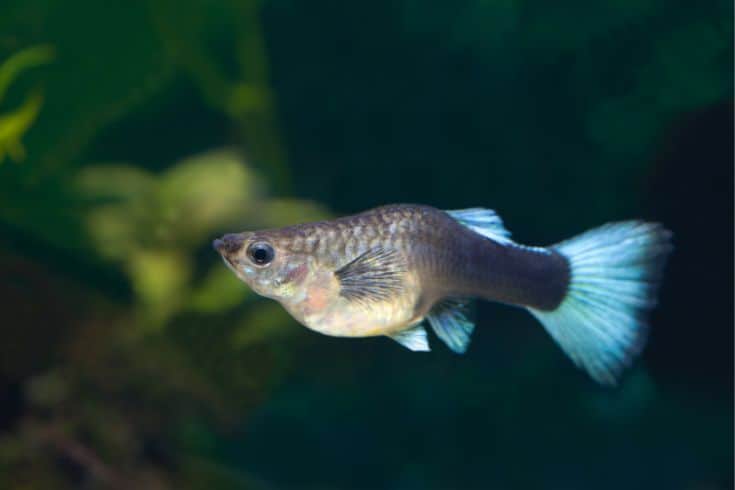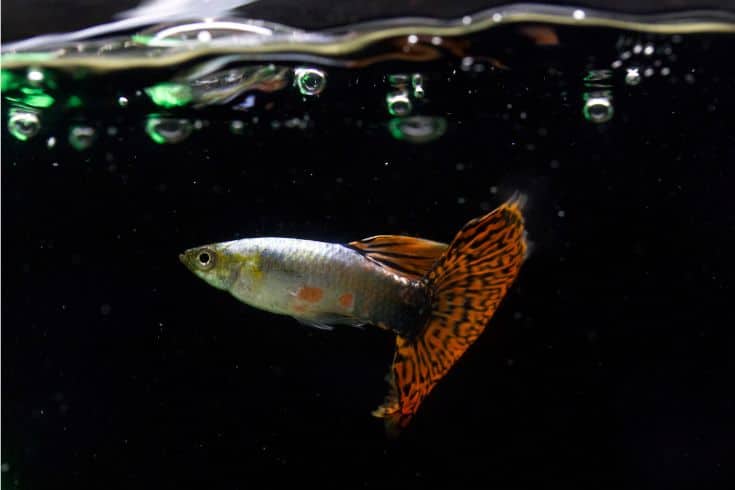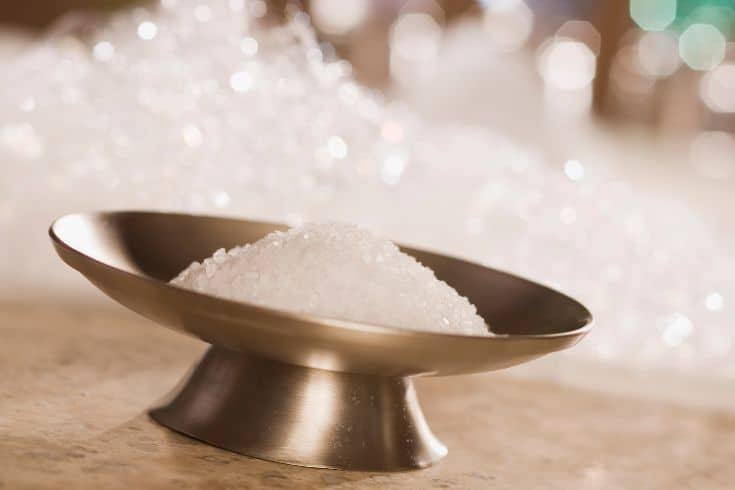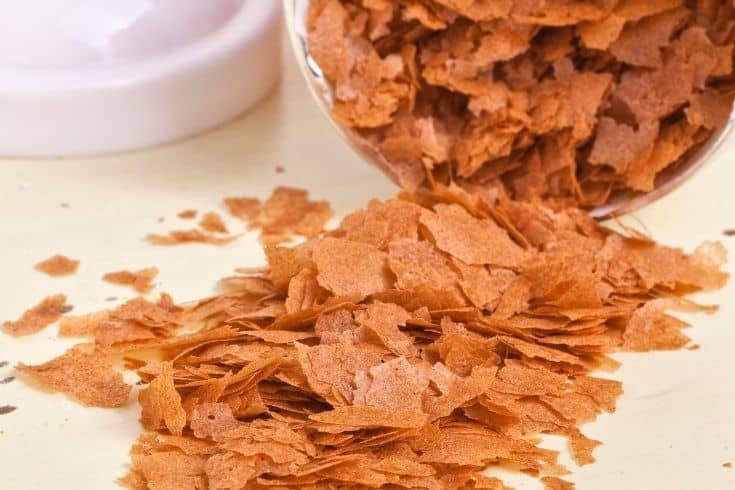Every aquarist dreads the notion of finding their fish unalive and motionless at the bottom of the tank. While many fish diseases can cause this, one of the more common ones is dropsy. Also kbloodwormsnown as bloat, dropsy is an invisible fish killer that affects several fish species, including guppies.
What is Dropsy?
Dropsy is not a single disease but a symptom of several different diseases. It is characterized by abnormal fish swelling caused by an accumulation of fluid in the body cavity. This can be caused by several different medical conditions, including bacterial infections, fish tuberculosis, or any number of infections affecting the internal organs.
The prognosis for dropsy is generally less than favorable. Unfortunately, most fishkeepers spot the illness when pinecone scales develop, by which point the fish is often too sick to be saved. However, early treatment can save the fish’s life in some cases.
Symptoms of Fish Dropsy
Swollen Belly
The most obvious symptom of dropsy is a swollen belly. This is caused by an accumulation of fluid in the fish’s tissues, which makes the fish’s belly appear distended. The fish’s scales may also stand out from its bloated stomach, causing an effect known as “pineconing.”

As the fluid buildup worsens, the guppy eventually develops a curved spine. This will affect its mobility and make it more difficult for the fish to swim. By this stage, the fish is often too weak to feed and will gradually waste away.
Lethargy
Dropsy-affected fish are often lethargic and listless. They may hide more than usual and have difficulty swimming. As the disease progresses, the fish will become increasingly debilitated and may eventually be unable to swim at all.
Some fish may also display odd swimming patterns, such as swimming upside down or sideways. Though symptom is more commonly associated with swim bladder disorder, it can also be a sign of dropsy in some cases.
Loss of Appetite
A loss of appetite is another common symptom of dropsy. This is usually the first sign that something is wrong, as most guppies are enthusiastic eaters. A fish with dropsy may refuse to eat altogether, or only nibble at its food.
Appetite loss is generally considered one of the later symptoms of dropsy, as the fish is often too sick to eat by the time its belly begins to swell.

Causes
Stress
It’s hard to pinpoint a specific source of stress in aquarium fish, as it is often the result of several different factors. A new fish tank, for example, is a completely different environment from the one in which most guppies are raised. This can be stressful for the fish, particularly if they are not acclimated properly.
Another common source of stress includes aggressive tank mates. It can be hard to spot the link between aggressive aquarium fish and fluid retention, but the truth is that long-term stress weakens the fish’s immune system and makes it more susceptible to disease.
It helps to think of stress as a precursor to guppy diseases. Once you’ve identified and removed the source of stress, you can focus on treating the underlying disease.
Buildup of Ammonia
You may have heard that you should allocate a gallon of water for every inch of fish in your tank. This rule of thumb is generally a good one to follow, but it’s not always possible, mainly if you’re keeping a large number of fish. A tank that is too small for its inhabitants is more likely to experience ammonia spikes, which can be deadly for your guppies.
To keep your aquarium water parameters stable, you’ll need to perform partial water changes on a regular basis. This will help to remove any ammonia that has built up in the tank water and keep your fish healthy. The little polluted water left behind will be diluted by the fresh water, making it harmless to your fish.
Bacterial Infections
Dropsy is often a symptom of an underlying bacterial infection, particularly if you’re already looking at a tank full of infected fish. A single sick guppy can cause a tank full of healthy fish to quickly fall ill. As a consequence of a widespread bacterial infection, some fish may develop dropsy as the bacteria begin to attack their organs.
The best thing to do in this situation is to move any sick fish from the original tank into a hospital tank. This will help to prevent the infection from spreading and allow you to treat the fish more effectively. Of course, you’ll need to be vigilant about sterilizing any equipment that has come into contact with the sick fish before using it in a healthy tank.
Improper Nutrition
The final, but not least important, cause of dropsy is poor nutrition. Guppies are not particularly picky eaters and will often accept just about anything you offer. However, expert fish keepers will attest to the fact that a healthy diet is essential for the long-term health of your fish.
Many people leave their fish susceptible to disease by feeding them the wrong types of food. A healthy diet for guppies should include a variety of fresh and frozen foods and high-quality pellets or flakes. By opting for the right types of food and feeding your fish regularly, you can help prevent dropsy and other fish diseases.
Treatment
Because dropsy is often a symptom of an underlying condition, it can be difficult to treat. In most cases, the focus should be on treating the underlying disease, rather than the dropsy itself. That said, there are a few things you can do to ease your fish’s suffering and give it the best chance of recovery.
Add Aquarium Salt

Generally speaking, adding salt to a tank disrupts the osmotic balance, which can be deadly for fish. In the case of dropsy, however, a gentle salt treatment can help to reduce fluid retention and fish bloat. It can also alleviate some of the general symptoms of disease in fish, such as lethargy and loss of appetite.
The key is to use a very small amount of aquarium salt, around half a teaspoon of salt per gallon of water. We recommend doing so in a separate tank, as this will make it easier to remove the fish if the salt concentration becomes too high. You should also be prepared to do a partial water change every day or two, as the salt will quickly build up in the tank water.
Improve Water Conditions
Water pollution and a dirty fish tank are often the underlying causes of dropsy in guppies. As a result, one of the best things you can do to treat the disease is to restore correct water parameters. This means performing regular water changes, keeping the water temperature stable, and ensuring that your fish have plenty of hiding places to reduce stress levels.
You should also test the water quality regularly, using a reliable aquarium test kit. The accumulation of water pollutants can happen quickly, so it’s important to keep on top of things to ensure your fish are healthy and happy. A good test kit should test for ammonia, nitrite, and nitrate levels, as well as pH.
If you find yourself struggling with water quality issues on a regular basis, it may be worth investing in a good-quality filter. A good filter will help keep the water clean and reduce the amount of maintenance required to keep your fish healthy. It doesn’t eliminate the need for water changes, but it can make a big difference.
Feed Fresh, High-Quality Foods

The key to a guppy’s health is a varied diet. As omnivores, guppies need a mix of plant matter and protein-based fish food to meet their need for a balanced diet. A simple, fuss-free way to meet their dietary needs is by feeding them high-quality flake food, supplemented with the occasional treat of fresh or frozen foods.
Tropical fish flakes contain a good amount of protein, but introducing animal-based sources such as bloodworms, daphnia, and brine shrimp will help ensure your guppies get all the nutrients they need. Plant-based foods, such as spirulina flakes and algae wafers, will provide them with the fiber they require for good digestive health.
It’s also a good idea to feed your guppies smaller meals more often, rather than one large meal per day. This will help keep their digestive system healthy and reduce the risk of bloating or constipating. It’s better to err on the side of caution and feed your fish a little bit at a time, rather than giving them a large amount all at once.
Treat Fish With Antibiotics
Assuming that the underlying cause of your fish’s dropsy has been identified, treating the infection as quickly as possible is important. This usually involves using a course of antibiotics, which can be administered through the water or via medicated food. The vast majority of dropsy disease is caused by bacterial infections, so antibiotics are usually the most effective course of treatment.
You should always consult a veterinarian before treating your fish, to ensure that you’re providing proper treatment. There are a wide variety of antibiotics available, and not all of them will be effective against the specific type of bacteria that’s causing your fish’s infection. A veterinarian will prescribe the right medication, and provide guidance on the best way to administer it.
Some people also opt for OTC medication that’s been approved for use in freshwater aquarium fish. Common examples include erythromycin, oxytetracycline, and ampicillin. These medications are readily available at most pet stores, but following the dosage instructions carefully is important to avoid harming your fish.
Remove Organic Waste
Did you know that ammonia spikes are one of the leading causes behind the vast majority of fish illnesses? If you’ve ever found a dead fish in your aquarium, chances are it was the victim of an ammonia spike. Ammonia is produced when organic waste breaks down and is incredibly toxic to fish. Often, they build up without you even realizing it.
To help prevent ammonia spikes, it’s important to remove organic waste from your aquarium on a regular basis. This includes things like uneaten food, fish waste, and decaying plants. A good quality aquarium vacuum will make the job much easier, and help to keep your fish healthy in the long run. Gravel vacuums are relatively inexpensive and can be found at most pet stores.
Most seasoned fish keepers recommend vacuuming the gravel and performing a water change every week. This helps to remove built-up toxins from the water and keep your fish healthy and happy. If you have a larger aquarium, you may need to vacuum and change the water more often.
The Takeaway
We hope this article has been helpful in educating you about dropsy and how to best care for your fish. The key to preventing dropsy is to maintain a clean and healthy aquarium, and to keep a close eye on your fish for any signs of illness. Once you’ve done that, the chances of your fish developing this disease are slim.
Did you find this article helpful? Please share it with your friends! Thanks for reading, and happy fishkeeping!
